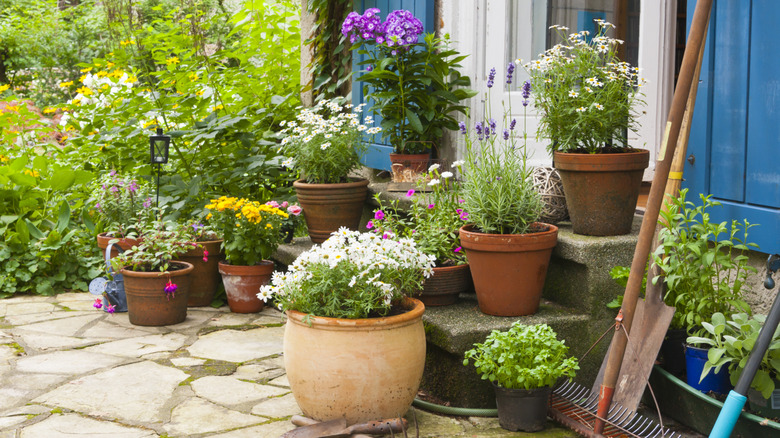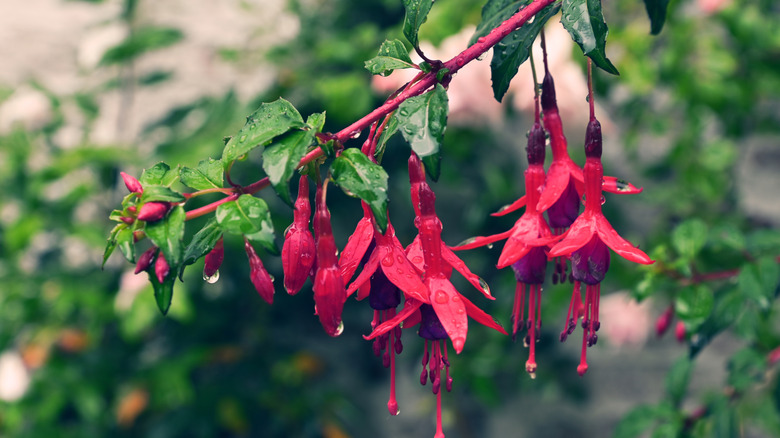The One Colorful Flower You Should Plant In October To Brighten Your Small Patio
We may receive a commission on purchases made from links.
If you have a small patio you want to brighten up with a set of beautiful blooms, one colorful flower you should plant in October is Fuchsia. The shade lover will add a vibrant touch to your home's exterior, whether added in a hanging basket or planter. Though they bloom from May to October, you can grow the plant as a perennial in milder climates with little frost and cooler summers, such as in USDA Zones 7 to 10. Thanks to the fuchsia's showy flowers, often described as resembling a fountain, it makes an impressive plant for your home.
The variety of fuchsias is large, with nearly 100 species in the genus. The hardy fuchsia (Fuchsia magellanica) is a particular favorite for gardeners who crave color without too much maintenance. Thriving as a container plant, this species grows long, arching stems for a dramatic statement on an otherwise bare patio. Hardy fuschias are also one of the beautiful varieties of fuchsia you can grow to attract hummingbirds, which welcome these glittery, jeweled birds thanks to their red-pink, pendulous flowers. The tubular shape lets hummers effortlessly sip nectar and provides sustenance during migration as they journey toward warmer temperatures. Fuchsias are also a great pet-friendly plant; they are non-toxic to dogs and cats, only causing mild stomach upset if eaten. With proper care and attention, along with ample shade, your hardy fuchsia will reward you with all of the blooms you need for a spectacular show.
How to grow fucshias for October colors on your small patio
Fuchsia seeds are available from nurseries, but the best way to add color to your small patio in the fall is to buy starter plants. This way, you can set them up for success by planting them in a container measuring a minimum of 10 inches in diameter. Ideal for covered patios, you should set your planter in a spot with plenty of shade and protection from the sun. Providing dappled sunlight ensures they don't get too hot without keeping them in the dark either. Plant them in moist but well-draining soil rich in organic matter, such as Miracle-Gro Potting Mix. Keep the soil wet but not soggy, aiming for 1 to ½ inches of water per week, making adjustments for weather and temperature conditions. Avoid watering in the evening, as consistently wet foliage can encourage moisture-related diseases, such as fuchsia rust. Water in the morning instead, so the leaves have time to dry throughout the day.
While fuchsias are not overly prone to pests outdoors, whiteflies, aphids, and thrips may attack your plant. Inspect for any signs of pests, looking for speckled, yellowing, or sticky leaves. If you spot any of these symptoms, treat the leaves with an insecticidal soap to control the spread. Deadheading spent flowers encourages more blooms, plus it keeps your plant looking tidy in the container or basket. If you don't have time, don't worry — the dead blooms will drop naturally. Pinch growing tips to force the plant to branch and spill out of the container, continuing only until one month before the first frost date in your zone.

